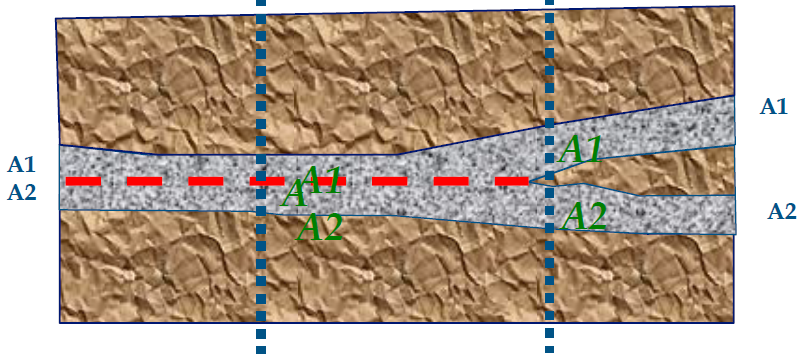Coal seam splitting is a common occurrence that can often be challenging for geological resource modeling and extraction. The result of interruptions in the coal forming process, coal seam splitting occurs when a coal seam traced laterally splits into a minimum of two individual coal seams separated by a thickness of non-coal strata.
These splits can be influenced by variables such as water table levels, seam thickness, growth faulting and other environmental factors, all of which affect the type of deposit available. Consequently, geologists need to consider carefully the type of deposit they are analyzing in order to select the most suitable modeling method.
Only by better understanding the nature of the deposit will geologists be able to model their deposits accurately and efficiently with the least amount of resource wastage. GEOVIA Minex™ has two types of modeling methods to help achieve this: Ply Splitting and Father/Son. Here are some tips to better understand each method and address your coal seam splitting.
Method 1 – Ply Splitting
Ply Splitting is used to set up and split seams into component piles based on percentages for each ply. For example, in the image, below, splitting down the dotted red line allows A in Hole 1 to join with A1 and A2 in Hole 2.

Instead of using the default setting thickness percentage to define the splitting or merging relationships, a percent grid can be used to provide more detailed information and reduce spotting of the coal deposit.
Another benefit of ply splitting is the ability to separate quality values in compound seams. For example if Hole A1 has high concentrations of sulphur while A2 has a low concentration of sulphur, this method can define where this concentration lies from the parent seam.
WHAT TYPES OF DEPOSIT ARE SUITED TO FOR PLY SPLITTING
- Splits persisting over hundreds of thousands of meters
- Splits with minimal variation in thickness
- Most overbank deposits
- Most crevasse-splay deposits
It should be noted that ply splitting encodes the seams as separate piles rather than a whole unit, which can affect the identification/definition of seams in the field. Some resource loss can also occur if estimated thickness in compound seam is less than defined minimum thickness, which requires more detailed resources reporting steps taken in Minex (using SQL) to reduce resource loss.
Method 2 – Father/Son Splitting
The Father/Son method can be used when ply splitting is not suitable. This feature in Minex brings flexibility and customizability to the geological modelling process, as it provides the user with full control over every step in the model.
Father/Son is used to add seams or piles to boreholes where a unit is part of the seam group as another unit, but is an extra piece of coal above or below another interval. In the image, below, the solid blue line represents the split.

The benefits of this method include the ability to trace the “son” seam (A1) into the “father” seam (A), which distinguishes between the main seam and sub-seam to maintain seam thickness statistic in between both.
Additionally, this solves the problem of lack of comprehensive data, where complex sequences have been simplified based on geophysical logging.
WHAT TYPES OF DEPOSITS ARE SUITED TO THIS METHOD?
- Deposits where open hole or chip drilling have been used
- Deposits where only bulk seam information is provided
- Local seams that occur from stream deposits
WHICH METHOD SHOULD I USE?
Both Ply Splitting and the Father/Son Splitting methods demonstrate the importance of assessing coal deposits at the start rather than selecting a preset method or using a “one size fits all” approach. While both methods can always be combined, it is essential to customize the type of method based on the mine and the deposit to ensure the most accurate results.
Want to learn more? Check out some of the other geology features in Minex.
Click here for more Minex Tips & Tricks.
